Got a Rolling Ankle? Here’s What You Can Do About It
Ever feel like your ankle has a mind of its own? One minute you’re walking along just fine—and the next, you’re wobbling or tipping over for no clear reason. If your ankle keeps rolling, even on flat ground, you’re not alone.
This kind of problem is more common than people think. And the good news? It’s treatable.
Why does my ankle keep rolling?
When we talk about a “rolling ankle,” we’re usually describing something called chronic ankle instability. That’s just a fancy way of saying your ankle isn’t holding steady like it should. This can happen if:
You’ve had a past sprain that didn’t fully heal
Your ankle muscles are weak or unbalanced
The ligaments (those stretchy bands that hold joints together) are too loose
Your balance and coordination are a bit off
Sometimes the first sprain was years ago—but the ankle never got the right rehab, so it stayed a little bit unstable. Over time, that instability can turn into a pattern where the ankle gives out again and again.
Why this matters
It’s easy to brush off a rolling ankle as “just clumsy” or “no big deal.” But each time it happens, you risk another sprain—and more damage to the ligaments, cartilage, or even bones. And the longer it goes untreated, the harder it can be to fix.
But there’s good news: with the right help, your ankle can get stronger and more stable.
How physiotherapy helps
At Take Control Active Rehab, our goal is to get you back on solid ground—literally. Here’s how we usually approach ankle instability:
1. Assess the issue
We start by taking a close look at how your ankle moves, where it’s weak, and what happens when you walk or stand on one leg. This helps us find the root of the problem.
2. Build strength in the right places
Ankle rehab isn’t just about the ankle. We’ll often work on the foot, calf, and even your hips to create a stronger foundation. You’ll learn targeted exercises that gently build stability and control.
3. Improve balance and control
Balance training is a big part of recovery. Think wobble boards, single-leg work, and fun challenges that retrain your body to react quickly and safely.
4. Support healing and prevent re-injury
If there’s swelling, pain, or tightness, we can use hands-on treatment and movement strategies to help you heal faster—and avoid rolling again.
5. Return to your activities—confidently
Whether you love walking the bay, chasing your kids, or playing sport, we’ll help you get back to what you love, safely and with a steady step.
A few things you can try at home
If your ankle rolls from time to time, here are some gentle things to try:
Balance on one leg while brushing your teeth (hold onto the sink if needed)
Write the alphabet with your foot to improve ankle motion
Towel scrunches: use your toes to scrunch up a towel—great for foot control
Avoid uneven surfaces if your ankle is already sore or swollen
But if it keeps happening, or you’ve had more than one sprain, it’s time to see a physiotherapist in Oatley who can give you a personalised plan.
Let’s help your ankle stay steady
You don’t have to keep living with the fear of twisting or rolling your ankle every time you step off a curb. With the right rehabilitation in Oatley, you can build strength, balance, and confidence in your movements again.
At Take Control Active Rehab, we’re here to guide you through it—with simple, clear steps that make sense. Book in today and let’s get your ankle back on track.



